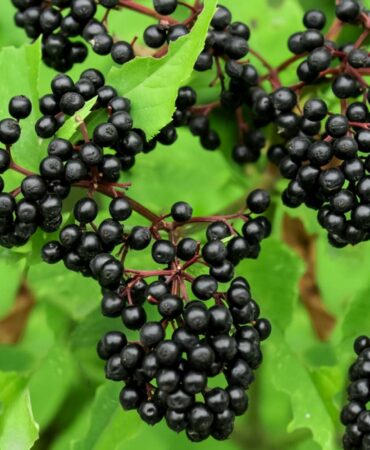Currently Empty: £0.00

Herb Histories: Dandelions – Holy Parachutes and Asexual Seeds
“Weeds were the first flowers I knew, they are probably the first flowers anyone knows – the little daisy and buttercup in the lawn. Blowing dandelion clocks. …[Weeds are] beautiful, they’re part of the natural world, attracting bees butterflies and hoverflies, and they’re connected to our lives”
– Jack Wallington, Wild About Weeds
The sentimental and environmental meaning of Dandelions (and other so called weeds) could not be summed up better in a few sentences than in the above by Jack Wallington. We need more though, and to give it to us, is Helen with another instalment of Herb Histories. Let Herb Histories with Helen begin…
Written by Helen Miller
Dandelions are a bright bundle of paradoxes. From their name to their seeds they are vastly more complicated plants than they appear to be as they sit silently in our lawns. Despite all the herbs covered so far in this series, I could easily become obsessed with Dandelions!
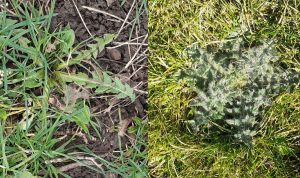
What’s In A Name?
The Old English name for Dandelion meant ‘egg plant’ due to the spherical cluster of seeds it produces. Other names for this plant include ‘priest’s crown’ and ‘swine’s snout’. The name ‘piss-a-bed’ arose thanks to Dandelion’s diuretic qualities.1, 10
The actual name of Dandelion comes from “Dent de lion” (French), which may be derived from “Dens leonis” (Latin). Both names mean Lion’s teeth. This is thought to come from the shape of the leaves, which can resemble the angular jaw of the lion, complete with teeth. But it could also come from the yellow flowers resembling a golden-headed heraldic lion or the whiteness of the root.5
In Brunfels’ Contrafayt Kreuterbuch, written in 1532, there is a picture of a Dandelion leaf looking very much like lion’s teeth. There are no roots clearly illustrated at all in the old herbals.3 This tends to rule out the whiteness of the root giving rise to the name.5
The official name for Dandelion, Taraxacum officinale, comes from Greek. Taraxos means ‘disorder’, and akos means ‘remedy’. Or an alternative comes from Taraxo meaning ‘I have excited’ and achos meaning ‘pain’. The officinale part of the name means it was the official remedy sold in an apothecary’s shop.
Holey parachutes – a great idea!
The way a Dandelion distributes its seeds is fascinating. Most people have observed the pappus travelling when they blow on the seed head to disperse the seeds in the air. It floats away serenely, carried by air currents, without wobbling unstably all over the place.
What makes the Dandelion pappus interesting is if you compare it to an aeroplane wing or a parachute. One thing becomes immediately obvious. Aeroplane wings and parachutes are solid structures. A Dandelion pappus is not.
The pappus acts like a parachute. But whereas a parachute is impermeable to air flowing through it, a Dandelion pappus is open. This is important because by allowing air to flow through the pappus, the pappus can maintain a steady flow of air in its wake. Thus maintaining its stability in the air. This is what allows the seed to successfully travel so far from its parent plant.7
A Confusion of Dandelions
Dandelions are amongst some of the trickiest plants to identify accurately. This is because they can form seeds without going through sexual reproduction – they can be asexual or, specifically, apomictic (meaning they asexually reproduce through apomixis). This means that Dandelion biology is very complicated!1
The advantage of apomixis is that it produces greater reproductive efficiency over sexually reproducing neighbours because the plants don’t need to wait for pollen to be germinated by another individual before the seeds develop. However, their advantage is short-lived because the plants lose their ability to adapt to changes in the environment.3
The benefit of apomixis therefore seems to be the preservation of high-quality combinations of genes because the recombination of genes during sexual reproduction is suppressed. Species that undertake apomixis tend to have a wider geographic range than species that don’t do this, particularly further north. 3, 9
It gets more complicated though! Not all Dandelions reproduce in the same manner. Some Dandelions reproduce sexually, some reproduce through apomixis. Hence why there are lots of micro-species and identification is tricky! 3,9
It has been suggested that a mutation causes male infertility in some Dandelions. If this does occur and the Dandelion is apomictic it has no effect on seed fertility. However, over 80% of the British Dandelion micro-species that reproduce apomictically still produce pollen, yellow petals and nectar. The only sensible reason for this is that these clones have developed relatively recently, and, since evolutionary adaptation is slow in asexual species these features for sexual reproduction are still retained. 3,9
There are only a few experts in the world who can confidently identify Dandelions. This is why a Dandelions are often referred to as Taraxacum species (or Taraxacum sp.) rather than anything more specific. Over 30 groups of species are recognised in Europe and more than 1200 are recognised worldwide. All of this means the nomenclature and taxonomy is in a constant state of flux.1 So, if you struggle to identify Dandelions, don’t beat yourself up about it!
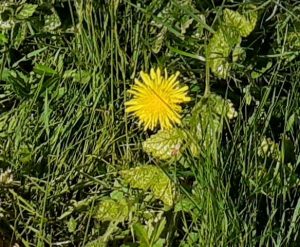
Traditional Uses of Dandelion
So, we’ll start with Culpeper – who is…let’s say…very assertive about the benefits of Dandelions, and other herbs.
“You see here what virtues this common herb hath, and that is the reason the French and Dutch so often eat them in the spring; and now if you look a little farther, you may see plainly without a pair of spectacles, that foreign physicians are not so selfish as ours are, but more communicative of the virtues of plants to people.”
Dandelions are cold and drying. According to Culpeper and Gerard they are opening and cleansing.2, 4 This makes them good for the liver and also for the kidneys as a diuretic. Gerard recommends them boiled in vinegar for urinary infections.4 It was also used to cure gallstones and piles.5
A common way of using Dandelion was as a juice.4, 5 This was made by pressing the root and was thought to contain the most active constituents. Apparently, the leaves were rarely used – mostly for making Dandelion beer – but the seeds were often collected and used.5
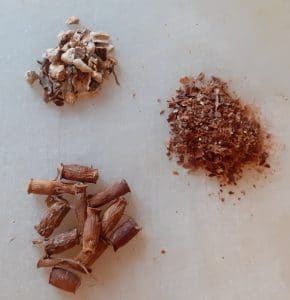
Modern Uses of Dandelion
It is thought the hepatoprotective action of Dandelion comes from its restorative action on the liver cells. The mechanisms responsible for this are probably multi-faceted, as is the case for how many herbs work.
Dandelion is thought to prevent the progression of liver fibrosis because of its ability to scavenge free radicals and to modulate inflammation in tissues.8 They have also been found to be more affective than silymarin in reducing inflammation in the liver (although this was one chemical not the whole milk thistle plant).6 Some of the compounds in Dandelions thought to be responsible for this action are polysaccahrides, flavonoids, phenolics, tannins, taraxol, taracrol and inulin.8
The anti-obesity effects of Dandelion are due to the oligofructans contained in the plant. These molecules inhibit lipid accumulation in the body. This reduces inflammation in the liver and reduces insulin resistance, as well as being anti-oxidant.8
From its fascinating reproduction to its constituents and medicinal actions, I feel we still have masses more to discover about our common Dandelions.
Helen is a freelance copy and content writer, enthusiastic about science and history. To learn more about her work visit her Linked-In profile.
References
- Barker, J. (2001) The Medicinal Flora of Britain and Northwestern Europe, Winter Press
- Culpeper, N. (1653) Culpeper’s Complete Herbal: consisting of a comprehensive description of nearly all herbs with their medicinal properties and directions for compounding the medicines extracted from them, W. Foulsham & Co., Ltd., London.
- van Dijk, P. J. (2003) Ecological and evolutionary opportunities of apomixis: insights from Taraxacum and Chondrilla, Trans. R. Soc. Lond. B, 358, 1113–1121 DOI 10.1098/rstb.2003.1302
- Gerard, J. (1633) The Herball: A General Historie of Plantes.
- Grieves, M. (1998) A Modern Herbal, Tiger Books International, London.
- Hamza, A. A., Mohamed, M. G., Lashin, F. M. and Amin, A. (20200 Dandelion prevents liver fibrosis, inflammatory response and oxidative stress in rats, The Journal of Basic and Applied Zoology, 81: 43, https://doi.org/10.1186/s41936-020-00177-9
- Ledda, P. G., Siconolfi, L., Viola, F., Camarri, S. and Gallaire, F. (2019) Flow dynamics of a dandelion pappus: A linear stability approach, Rev. Fluids, 4 (7) DOI:https://doi.org/10.1103/PhysRevFluids.4.071901
- Mahboubi, M. and Mahboubi, M. (2020) Hepatoprotection by Dandelion (Taraxacum officinale) and mechanisms, Asian Pacific Journal of Tropical Biomedicine, 10(1): 1-10.
- Muralidhar, P. and Haig, D. (2017) Sexy males and sexless females: the origin of triploid apomicts, Heredity, 118: 436-441.
- Pollington, S. (2011) Leechbook: Early English charms, plantlore and healing, Anglo-Saxon Books
Herb Histories is a regular blog series published every third Saturday of the month. If you would like to be notified directly via email when the next chapter is available, please send ‘Herb Histories’ to blog@herbsociety.org.uk.

